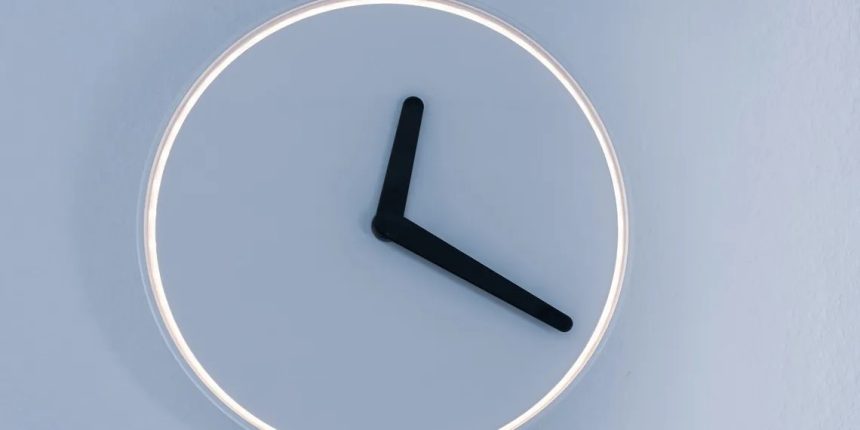When working with dates and times in React, it can be challenging for those who are not familiar with the subject. Luckily, there are several libraries available to assist with managing dates and times in React, and one popular choice is Moment.js.
Moment.js is a lightweight library that provides a straightforward way to manipulate and format dates and times in JavaScript.
To begin using Moment.js in your React application, you need to install the Moment.js library as a package for handling date and time operations in JavaScript. You can accomplish this by executing the following command in your terminal:
npm install moment
Once the installation process is finished, you can start utilizing Moment.js within your React components.
One of the key features of Moment.js is the ability to display dates and times in a specific format within your React app. To achieve this, you need to import the moment object from the installed Moment.js package.
With Moment.js, you can easily format dates and times according to your desired layout. By using the format() method, you can specify the format you want and obtain a string representation of the date and time.
import React from 'react'; import moment from 'moment'; function App() { const date = moment().format("MMMM DD YYYY"); const time = moment().format("HH mm ss"); return (Today’s date is
The time is a time.
) } export default App Moment() method Moment() method creates an entirely new moment object which is a particular point in time. Format() method formats a moment object. formatting() method formats an object of a moment into an image of a string.
Format() is a method that takes a string argument. method format() method takes an argument of string that specifies the format that you want for the current object. The argument string can be the letters in a sequence or particular characters having particular significance.
A few of these characters include:
- YYYY: Year that has four digits
- YY: Year that has two digits
- MM Month that has two numbers
- M month with one or two numbers
- MMMM: Month in words
- D: Month day with two numbers
- D D: The day of the month that has one or two figures
- Do Do: The day of the month that is the normal
- HD: Hour that has two numbers
- H Hour that has one or two numbers
- mm Minute that has two numbers
- m Minute with one or two numbers
- ss Second with two numbers
- s The second one, or both numbers
If you render the Application component of the previous block of code is rendered the date and time is shown in the format specified to the user’s screen.
Moment() is a moment() method can accept a string either a time or date argument. If it is determined that the time() method has the string date or time argument, it will create an object that represents the moment or that date. The string could be encoded in a variety of formats, like ISO 8601, RFC 2822 as well as Unix timestamp.
For instance:
const date = moment('1998-06-23').format("MMMM DD YYYY");
Making use of Moment.js to control Time and Date
It is also possible to use the Moment.js library also includes a number of ways to manipulate time and dates. These methods let you alter the time duration, subtract or add intervals to it, create particular values for the date and time components, and perform various other relevant operations.
For instance:
import React from 'react'; import moment from 'moment'; function App() { const tomorrow = moment().add(1, 'day').format("Do MMMM,YYYY"); const time = moment().subtract(1, 'hour').format("HH:mm:ss"); const lastYear = moment().set('year', 2022).set('month', 1).format("Do MMMM,YYYY"); const hour = moment().get('hour'); return (Tomorrow’s date is tomorrow
This was the date it was : hour, an hour ago
The hour of the day is
) } export default App In this instance it is possible to declare these JavaScript variables such as tomorrow, time, lastYear and hour. These four variables utilize different methods from the Moment.js library to alter date and time.
Tomorrow is a variable that uses the add() method. Tomorrow variable employs it’s addition() method to add a day to the date currently in use. It is the addition() method adds the time of a Moment object. The method requires two inputs which are a duration value as well as an integer representing the time unit to add. It could be years or months or weeks, days and hours, or minutes, and seconds.
You could also subtract time using subtract() method. subtract() method. In this example time is the value of the time variable employs an subtract() method to subtract an hour from the time currently being displayed.
Utilizing set() as the setting() method, the lastYear variable set the year up to 2022, and also the month until Februrary (since the month of January can be represented by zero). It is the setting() method assigns an exact amount of time to the Moment object.
Utilizing get(), the obtain() method, you can get a particular date and time. This obtain() method takes only one argument, an amount of time.
Making use of Moment.js to parse Date and Time
Another benefit of Moment.js is its capability to extract dates and times in strings. This can be helpful in the case of data that comes from other sources.
To decode the date or time in the string, you have to employ the moment() method. In this instance it is moment() instant() method takes two arguments: the date string and the format string.
Here’s an example of how you could utilize moment() to parse dates and times. time() method to sort the dates as well as times.
import React from 'react'; import moment from 'moment'; function App() { const date = moment('2920130000', 'Do-MMMM-YYYY').toDate(); console.log( date ); return ( ) } export default App In the above code block, moment() method will analyze the string 2920130000 by using “Do-MMMM-YYYY” string format. Its method toDate() method converts the moment object into the natural JavaScript Date object.
ToDate() method is a simple one. method toDate() method takes no arguments and produces an JavaScript Date object representing the same date and time as the object in which it is located.
Displaying Relative Time
Through Moment.js, the Moment.js library, it is possible to are able to format and display the relative time. For this, you can use fromNow() and toNow() methods. FromNow() and toNow() methods. These methods display the date between the date you specify and the current time.
For instance:
Import React from'react" and import moment from'moment app'; function() {Const yesterday = moment().subtract(7 day, 7) Const time1 = yesterday.fromNow(); 7 days ago, const time2 = yesterday.toNow() / /7 days later, return (
) } export default App In this instance fromNow() method, fromNow() method is used. FromNow() method returns the time that has elapsed relative to the date that was specified, whereas toNow() returns the time since that date. toNow() method returns the relative time up to the current time.
More to Moment.js
Moment.js is a robust library that offers a simple method to manipulate and format dates and times with JavaScript. You’ve learned how modify, show and parse dates and times with React by using Moment.js.
Moment.js provides a variety of other options like local, startOf, finishOf and more. With the details that you have read, you’re already well-prepared to begin using Moment.js within the React application.








